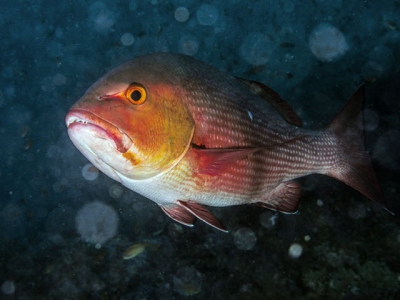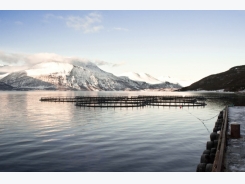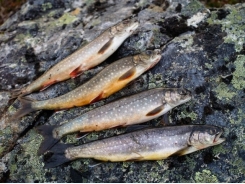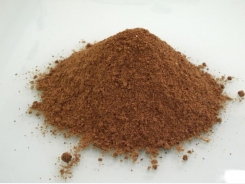Plant additive may boost farmed snapper immune response

Adding extracts from Chenopodium ambrosioides to the diets of farmed red snapper may improve fish’s antioxidant response and immune functioning when facing a disease challenge, say researchers.
A team of researchers with the Northwest Biological Research Center (CIBNOR) at the National Polytechnic Institute and the IPN Research and Advanced Studies Center (CINVESTRAV-IPN) in Mexico explored the use of the medicinal plant Chenopodium ambrosioides L. in the feed of farmed red snapper.
“Keeping in view the antioxidant potential and anti-inflammatory effects of C. ambrosioides L., the objective of this study was to evaluate its immunostimulant effect and antibacterial potential in Pacific red snapper (L. peru) blood and skin mucus,” the researchers said.
They found the plant has a high polyphenol content and antioxidant capacity. Fish fed the botanical additive demonstrated an increased hemoglobin content, respiratory burst activity and leukocyte blood populations.
Fish receiving diets with 1% C. ambrosioides showed antimicrobial activity in their mucus against some diseases, they said. While fish with 1% or 2% of the additive in their diet had increased superoxide dismutase and catalase activity.
Fish receiving the supplement also demonstrated higher levels of anti-protease, lysozyme and peroxidase in their skin mucus, they said.
“Several blood and skin mucus innate immune and antioxidant parameters, as well as bactericidal activity against V. parahaemolyticus and A. hydrophila were strongly enhanced after the dietary administration with C. ambrosioides leaves,” the researchers said. “Therefore, it would be beneficial to use dietary medicinal plant C. ambrosioides L. as an antioxidant, immunostimulant, and antimicrobial supplement for innovative applications in finfish.”
Exploring plant extracts used for aquaculture
There is increased interest in using medicinal or aromatic plants in aquafeeds to stimulate the immune system and could help control aquatic disease, the researchers said.
Aromatic plants may have the ability to address diseases caused by bacteria, they said.
Plants contain compounds like vitamins, flavonoids, carotenoids and other phenolic elements, which are linked to plants’ antioxidant and antimicrobial potential, they said.
In Mexico, several plants are considered to have medicinal properties including Persea Americana, Pimenta dioica, Piper auritum, and Chenopodium ambrosioides.
Why add Chenopodium ambrosioides to snapper feed?
Chenopodium ambrosioides is an aromatic plant that has been linked to nutritional and medical usefulness, the researchers said.
Previous research found that the plant could influence the immune system including for soft tissue or bone repair along with potential anti-tumor, anti-leishmanial analgesic, anti-nociceptive and antimicrobial properties.
“In a recent report in a murine experimental sepsis model, Rios et al. (2017) evaluated extracts and fractions of C. ambrosioides on bacterial inhibition, phagocyte activity, and modulation of the inflammatory response,” they said. “The results showed that C. ambrosioides (hexanic fraction) inhibited bacterial growth and inflammatory cellular recruitment of neutrophils and macrophages.”
When examining the plant’s chemical composition, the authors said they found the major chemical elements included carvacrol, vitamin E, sucrose, phytol and squalene. “Oral administration of some of those compounds demonstrated that they have immunostimulatory effects, improving intestinal health, and promoting fish growth."
However, Mexican C. ambrosioides’ ability to address fish pathogens remains unknown, they said.
Feeding trial details
A leaf extract from C. ambrosioides was examined for total phenolic content (TPC), total flavonoid content (TFC) and an antioxidant assay was completed, the researchers said.
During the feeding trial, 72 red snapper received one of four diets for a four-week period, they said.
The diets included a control with no C. ambrosioides, and diets with 0.5, 1% or 2% of the additive, they said.
Blood and skin mucus samples were collected at the end of week 2 and week 4 of the feeding trial, the researchers said. Blood samples were analyzed for hemoglobin levels, leukocyte population and respiratory burst activity, while skin mucus was checked for the presence of immune parameters.
Skin mucus was tested for bactericidal activity against two opportunistic bacterial pathogens – Vibrio parahaemolyticus (causing vibriosis) and Aeromonas hydrophila (causing motile aeromonad septicemia disease, they said. And it was assessed for antiprotease, lysozyme, myeloperoxidase (MPO) activities along with levels of antioxidant enzymes.
Results
The extract was found to have more phenolic compounds than flavonoid elements, the researchers said.
“The [ferric reducing antioxidant power] FRAP value was 0.1412 ± 0.004 μM Trolox; while ABTS [2,2′-azino-bis(3-ethylbenzothiazoline-6-sulphonic acid] radical was 0.224 ± 0.042 mg ascorbic acid g−1 DM.”
Fish on all of the supplemented diets showed increased hemoglobin levels at week 4 compared to fish on the control diet, while fish on the diets with 0.5% and 2% of the additive had increased respiratory burst activity at that point, they said. Fish receiving the diet with 0.5% C. ambrosioides had increased leukocyte populations at week 4 compared to control group fish.
“At week 2 or 4, a significantly major bactericidal activity could be observed against V. parahaemolyticus in fish fed any percentage of C. ambrosioides L. compared to the control group,” the researchers said. “However, the bactericidal activity against A. hydrophila was the highest in fish fed with 1% C. ambrosioides L. compared to those of other experimental diets.”
Fish on a diet with 0.5% or 1% of the additive had increased myeloperoxidase activity and superoxide dismutase compared to control group fish, they said. Fish receiving 0.5% had boosted lysozyme activity, while those on the 1% diet had enhanced antiprotease activity.
However, catalase activity increased for fish on the 1% or 2% diets, they said.
Source: Aquaculture
Authors: M. Maldonado-Garcia, C. Angulo, J. Vazquez-Martinez, V. Sanchez, M. G. Lopez, M. Reyes-Becerril
Related news
Tools

Phối trộn thức ăn chăn nuôi

Pha dung dịch thủy canh

Định mức cho tôm ăn

Phối trộn phân bón NPK

Xác định tỷ lệ tôm sống

Chuyển đổi đơn vị phân bón

Xác định công suất sục khí

Chuyển đổi đơn vị tôm

Tính diện tích nhà kính

Tính thể tích ao




 Hope for tackling complex gill disease in salmon
Hope for tackling complex gill disease in salmon  Searching for an in-feed sea lice vaccine
Searching for an in-feed sea lice vaccine